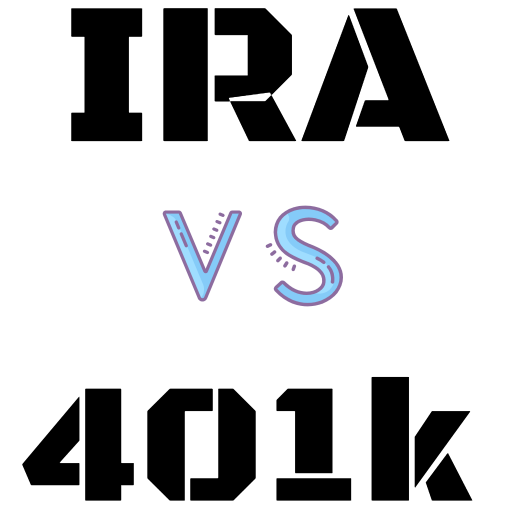
Harvard Business Review (HBR) published a dire warning seven years ago. Most Americans don’t know how to execute a retirement strategy that addresses the most prominent risk-income insecurity. With fewer people receiving guaranteed income from pension plans, we’ve been forced to rely on our own planning to take care of cash needs in retirement. How can you ensure that you don’t run out of money in retirement and that you’ll have enough income each month to pay all of your bills?
Despite talks of crisis in HBR, it’s not all doom and gloom. You can develop an investment strategy to set yourself up for a successful retirement. Educate yourself, focus on creating predictable income, and address the most prominent risks. If you can put those key considerations together, you’ll be on your way.
Image source: Getty Images.
Defined contributions replaced defined benefits
Pensions used to be commonplace for retirees. Monthly income wasn’t a concern for most households, which enjoyed guaranteed paychecks from pensions and Social Security for life. This income security is changing rapidly as fewer private employers offer pensions.
About one-quarter of full-time workers participate in a defined pension benefit plan, but that number is much higher for government employees. Only 11% of private-sector workers currently participate in pension plans, down from 35% in the 1990s. This was a necessary shift to keep many businesses out of bankruptcy, but it means that the burden of creating stable retirement income was shifted to households.
Retirement accounts such as 401(k)s or IRAs have become more popular, and they’re wonderful vehicles for asset building. However, the shift resulted in two major shortcomings. First, people generally don’t know exactly how much they need to save up to retire (and most people are falling short of the actual number). Second, a 401(k) can’t guarantee predictable income flows when income earners finally stop working.
A challenging shift in focus
Rock-solid retirement plans are focused on creating stable income streams that are high enough to meet basic expense needs and lifestyle expectations. You need to ensure that you’ll have enough retirement cash flow to live comfortably. Oddly, income planning generally takes a back seat to return on investment when people talk about retirement accounts.
A few factors are driving the focus on return on investment. First, it’s important to achieve strong returns on your retirement assets throughout your working career. It’s great to get the most out of your savings, so you’d obviously want to maximize the gains possible within your risk tolerance.
Investment professionals and the media also play a meaningful role. Financial advisors and asset managers are often assessed on the returns delivered by their allocation strategies. Risk management takes a back seat, and income planning isn’t even an afterthought in many cases. You almost never hear about income planning in major financial media outlets. It’s kind of boring and far less intuitive, and it isn’t particularly interesting to viewers or readers until they are approaching retirement.
The media and advisors shouldn’t be demonized for this. They’re responding to consumer expectations, after all. Still, it’s clear how this can cause problems when people suddenly have to grapple with an unfamiliar planning requirement at a pivotal time.
Don’t rely solely on Social Security
Social Security is an important part of the retirement income puzzle, but it can’t be the only one. Average Social Security benefits are well below median income for most households. In fact, Social Security for most people is only modestly higher than the federal poverty line.
Despite this glaring deficit, today’s seniors are too heavily reliant upon Social Security. It’s the only source of income for 40% of retirees, and it’s the largest source of income for more than 90%. Given the potential for government retirement benefits to shrink in 20 to 30 years as the system might struggle to self-sustain, that could grow into a real problem for people who aren’t creating income elsewhere.
Solving the retirement income puzzle
You can’t solve the issue overnight, but there are a handful of steps you can take to protect yourself.
- Save at least 15% of your income during your working life. One day down the road, your investment portfolio can be transformed into an income-generating machine. The amount of income that it can produce depends on the amount of assets saved. Measure how much you’re putting away each month for your future, and take full advantage of any employer 401(k) matching programs.
- Allocate your investment portfolio according to your age and risk tolerance. When you’re young, you need to prioritize growth. Index funds are fine for this, but there are even better options that will deliver bigger long-term gains despite taking on more volatility along the way. As you approach retirement, it’s important to reallocate those assets to reduce volatility. In retirement, stability and income become the primary concerns. A good bond allocation along with reliable dividend stocks are great for those purposes.
- Understand the connection between assets and income. Traditionally, financial advisors have used the 4% rule to estimate how much of your assets you can spend each year without running out of money in retirement. For every $1 million you have saved, you can reliably take $40,000 annually. However, low interest rates and rising life expectancy are causing many financial planners to revise that rule downward to 3%. Set your expectations accordingly, and make sure all of your expenses can be covered.
- Develop a sound income investment strategy. For the most part, dividend yields and investment-grade corporate bond yields are in the 2% to 3% range right now. There are occasional opportunities to break out of that range, but it’s probably not wise to stake your retirement on risky investments. Those include high-yield bonds with default risk, or stocks that the market has allowed to hit high dividend yields.
- Consider guaranteed income. You might be concerned that your savings or investment abilities won’t be enough to keep you and your spouse from running out of money in retirement. If that’s the case, consider an annuity. These are contracts provided by insurance companies, and they are meant to provide a guaranteed amount of income for life. Carefully consider the terms, fees, and reliability of your insurance agent before committing to these. Annuities can be very expensive or completely destroy your liquidity if they aren’t structured properly for your individual needs.
